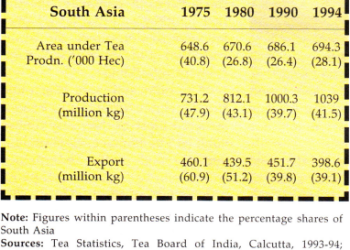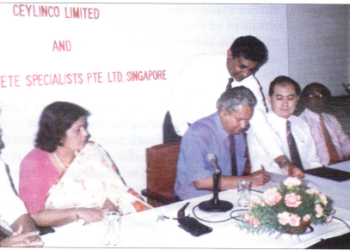UL Pai
Compared with other tea companies in India, Tata Tea has several user selling points. It is the single largest tea company in the world with largest capacities of tea estates. Not only has it managed to beat competition domestically (it has the largest market in which it has a 25% share) in the recent past, but also stepped up value addition through marketing packaged products. And last but not the least, the company is reaping benefits after emerging from the bottom of its product price circle.
A large proportion of Tata Tea’s new strategies are aimed at registering, developing and expanding international presence. Tata Tea now needs a global-sized operation. Substantial presence in Sri Lanka apart, Tata Tea is eyeing business prospects in the African nations. It is close to finalising ventures in Tanzania either through a joint venture or even acquisition route. With most of the African countries now moving away from nationalized regimes to more privately controlled operations, the tea major is also exploring opportunities in countries like Zambia and Uganda.
In accordance with this policy, Tata Tea acquired a 49% stake in Estate Management Services (EMSPL) of Sri Lanka two years ago and successfully bid for a group of 20 estates under the management of Watawala Plantations in Sri Lanka. EMSPL now holds a 51% stake in Watawala Plantations and has an annual production of 10 million kg of tea, two million kg of of rubber and two million kg of palm oil.
Tata Tea’s Sri Lankan operations during the financial 1996-97 year posted a net profit of 4.3 Crores (Cr) (Indian Rupees). During the first six months of the 1997 calendar year, Watawala operations alone are expected to report a profit of almost Rs 8 crore. Operations in Sri Lanka also include the management of Kahawatte Plantations, which produces approximately 5.9 million kg of tea per annum.
The company plans to expand its production base in Sri Lanka by another 10 million kg and is currently negotiating with companies in Sri Lanka. Again, Tata Tea will be looking to pick up a controlling interest in the new ventures. The manadate for this region also includes the realization of the full potential of properties using the Tata Tea infrastructure to market Sri Lankan teas globally. Keeping in line with its vision of becoming a major global player, expansion is very much on the cards.
For the year ended March 1997, Tata Tea registered sales of 699.44 cr which was 33.44% higher than the previous year. The gross profit before tax and after interest, however jumped from Rs 17.34 cr of last year to Rs 30.22 cr an increase of 42.62%. Although profit after tax (net profit) improved by 27% to Rs 58.65 cr.. it may be noted that the net as a share of the sales has dipped from 8.79% in 1995-96 to 8.38% in 1996-97. This suggests that the higher net profit was due to higher sales or volumes only. The company has a large expenditure bill and interest cost. However, it is pertinent to note that growth in expenditure was lower than the growth in sales, implying that costs per unit of turnover have infact gone down. On the other hand high interest in the last financial year resulted in the interest cost ballooning by 74%.
The good news is that international prices have firmed up. This means that while sales volumes will steadily grow, Tata Tea’s margins will start growing faster. A factor in the company’s favour is that it is a net seller in the auctions, and does not have to depend on price fluctuation for the packaged tea. Thus, it will be able to ride the crest of the rising tea prices. With an aggressive global outlook and a new business strategy Tata Tea hopes to make a transition from a primary tea producer to a consumer marketing company.




